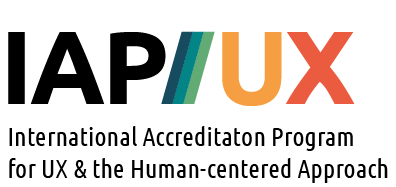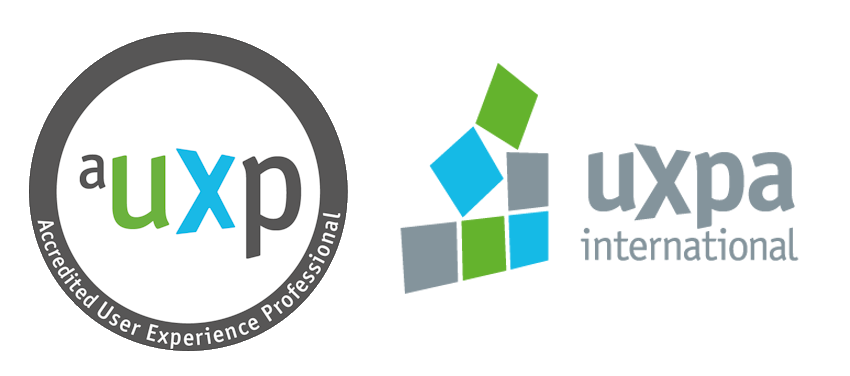Unicorns don't exist - but UX Professionals that know their strenghts
No one is good at everything. And “UX” is not one job, it is a huge professional field, with distinct methods, procedures, approaches, activities, artifacts and deliverables. Professionals bring a variety of qualifications to the table, each of them valuabe and with unique perspective. To assume that a person excels in all aspects of this field would be naïve. There may be some UX professionals who are able to handle many focus areas – and perhaps some even claim to be excellent at everything. However, such an attitude of entitlement is neither professional nor conductive to quality in implementation.
To focus the accreditation process, and also bearing in mind that no one can be good at everything, you are able to choose up to 3 focus areas of your expertise that will be subject for accreditation:
- UX Strategy
focuses on anchoring human-centered principles in strategic activities and in the alignment of an organization‘s business objectives. - UX Management
deals with the human-centered design activities within a project and is the counterpart to traditional project management / product owner (PM / PO). If PM has to represent business requirements, UXM maximizes the benefit for the specific user and minimizes project costs through pragmatic and technically flawless application of the principles of human-centered design. - UX / User Research
focuses on the collection, investigation and analysis of behavior, needs, motivations and frustrations of potential future users using scientific methods. Based on these findings, valid design decisions can be made, thus reducing project risks. - User Requirements
ensures that the user needs identified or derives in the research are specified in functional and qualitative requirements, reconciled with the requirements of other stakeholders and are passed on to the product, service, process and system development in a verifiable manner.
- Information Design
creates task-appropriate information and visualizes data for interactive systems or adapts existing content for them. Depending on the context of use, different media and their combinations can be used for this purpose. For example, designed presentations of processes, information graphics, animations, technical documentation etc., supporting the user in performing the tasks and may represent essential components of the system. - Interaction Design
specifies the interactions between users and the interactive system, describes the process flow by elements that are necessary for the interaction. Learned or unconscious processes and intercultural deviations must be considered. The focus is on the interaction of a human with a system within tasks and not on the visual appearance. - Information Architecture
deals with the organization, structuring and labeling of content in an effective and sustainable manner. It supports users in finding information, making decisions and completing tasks. It must keep an overview of all subsystems in order to make all information available to users at the right time in a manner that supports the suitability for the task. - UX Writing
develops the texts for the user interface with other stakeholders in order to support users in completing their tasks as efficiently and effectively as possible. Particular value is placed on the different user groups and accessibility, and the choice of language style contributes to recognition. - Interface Design
is responsible for the visual appearance of an interactive system by interpreting the corporate design guidelines and taking interaction specifications into account. Even if usability has priority, the user interface design serves the requirement of attractiveness by means of typography, colors, form, material, production technique, symbolic and visual language and the Gestalt laws. Consistency is created through the stringent design of interface elements and transferred to sustainable design systems.
- UI Development
is responsible for the accurate, stable and efficient translation of the specifications and designs into a technical solution. In addition, it ensures the functioning of this solution over the entire life cycle of the same. It completes the holistic claim of interdisciplinary work in human-centered design. - Testing / Evaluation
provides objective evidence that the specified requirements for a specific use or application have been met by an interactive system for specific users. - Accessibility
provides expertise for planning, designing, developing and testing products, systems, services, and environments which can be used by people with the widest range of user needs, characteristics, skills and capabilities to achieve identified goals in identified contexts of use (based on ISO 9241-210:2019). - Academic Education & Research
being active in academic, school or other non-commercial organizations in education and training in the field of human-centered design, usability, as well as research roles in the field. - Industrial Design
being responsible for the planning, conception, and design of products that are industrially manufactured. - Customer Experience
deals with the perception of a user‘s interactions as a customer with an organization‘s interactive systems. - Sustainable UX
focuses on economic, ecological, and social aspects, properties, and impacts in the strategy, planning, implementation, and operation of processes, products, systems, or services used by people.

